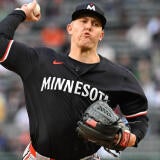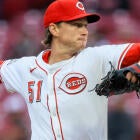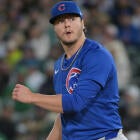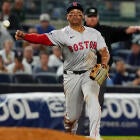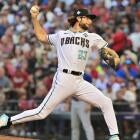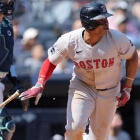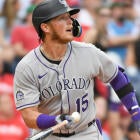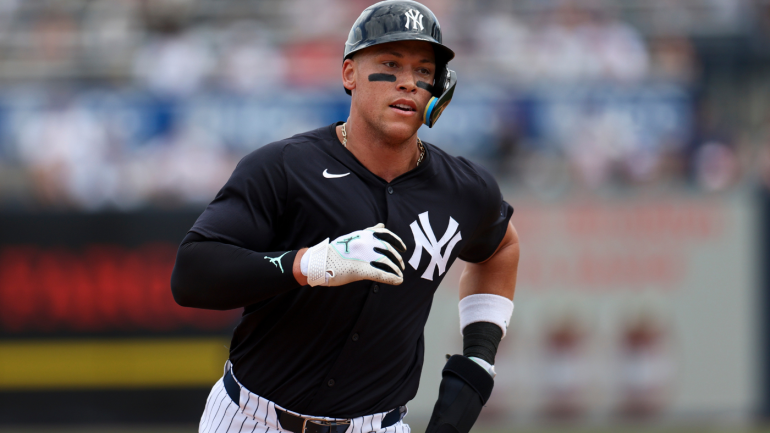
Do you remember who the best hitter in baseball was last April? It wasn't Ronald Acuña; he was sixth in wOBA among qualifiers. And it wasn't Shohei Ohtani; he was 29th despite going on to win the American League MVP.
It was Matt Chapman, and it wasn't close. He led baseball with a .481 wOBA after hitting .384/.465/.687 in the first month of the season. He slugged five homers and combined for 38 runs and RBI, and he wasn't just lucking into a bunch of seeing-eye singles. He led baseball with a massive 32.9% barrel rate, while also pacing all hitters in average exit velocity (96.3 mph) and hard-hit rate (67.1%). He was off to a terrific start, and the underlying numbers suggested he had earned that terrific start. This was about as slam dunk an early-season breakout as you could hope to fine.
Chapman would, of course, go on to hit just .205/.298/.361 over the final five months, torpedoing his value so badly heading into free agency that he ended up having to settle for what was effectively a one-year deal from the Giants this spring.
On the other end of the spectrum were guys like Spencer Torkelson, Josh Naylor, and Triston Casas, who ranked 175th, 169th, and 167th in wOBA in April. And, while they all mostly sported more impressive quality-of-contact metrics than their wOBA would indicate, none ranked in the top 50 in average exit velocity among qualifiers, and Casas was just 117th in hard-hit rate.
If you went just based on the first month of last season, you would have easily preferred Chapman to Casas, Naylor, or Torkelson, and you would've made a terrible mistake. Here's what each did from May 1 on:
- Chapman: .205/.298/.361, 12 HR, 33 RBI, 49 R
- Casas: .291/.385/.531, 21 HR, 57 RBI, 53 R
- Naylor: .330/.373/.523, 14 HR, 82 RBI, 47 R
- Torkelson: .238/.322/.472, 29 HR, 83 RBI, 79 R
Now, you could correctly point out that I am just cherry-picking examples here. Yes, I did open last April's leaderboards to find players I knew had wildly divergent performances the rest of the way to make a point about not overreacting to April performance. But the thing is, the much larger historical data also backs this point up.
I went back through the past five seasons to find all qualifiers from April and compared their performance to their season as a whole, giving us a sample of 671 players to compare to. And here's what it looked like:
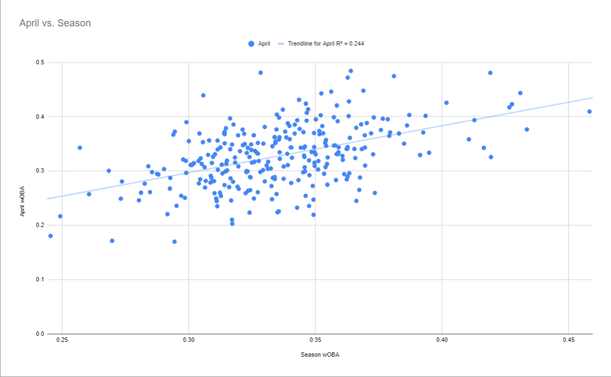
There's definitely a correlation between performance in April and performance for the season as a whole, though not an especially strong one. But, when you look at the exact same sample of players, what you find is that those players' June performance actually has an even stronger correlation to their total season number than their April performance:
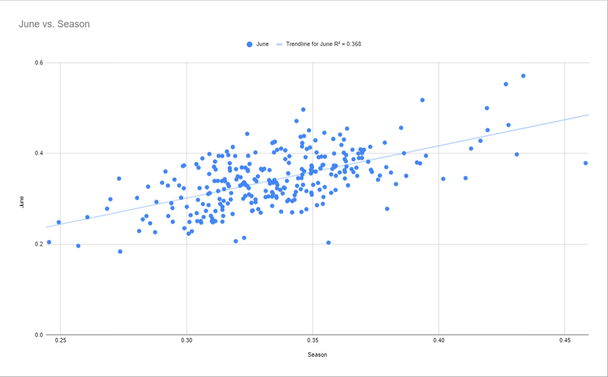
There are reasons why this might be, primarily that the weather in June is probably a bit more representative of the average weather of the entire season, and the colder weather in April tends to suppress offensive performance as a whole. When you consider it from that perspective alone, it makes perfect sense that June production has a stronger correlation to full-season production than April does.
But it's also worth noting that if Aaron Judge had a 23-game stretch where he had a .294 OPS in June in the midst of an otherwise normal season you almost certainly wouldn't notice. And I can say that with a fair degree of confidence because he had a 23-game stretch with a .297 wOBA in June/July of 2022 – you know, the year he hit 62 homers and was the No. 1 player in Fantasy – and I don't seem to recall any bellyaching about it then.
I point all this out to make a point my colleague Scott White made in a separate piece Tuesday: Don't overreact to April! We make this point every season, and yet here we are on April 23 and people are freaking out about Judge and Francisco Lindor, established superstars who just so happen to be having a slump to open the season. If you liked a player enough to draft them with a top-100 pick especially, almost nothing short of an injury should really change how you view them for the rest of the season.
Now, there is one other angle we can approach this from that could maybe justify overreacting to April performance. Because, if you're going to overreact to April performance, you're doing so under the assumption that a player's skill set might have changed in the offseason, for better or worse. So, let's look into the data and see if April performance has a correlation with a player over or underperforming his projections – and note here, I'm using ATC Projections data from 2021-2023, provided by Ariel Cohen of the Beat The Shift podcast:
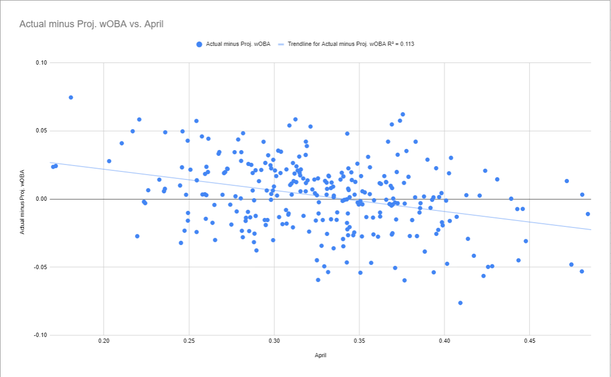
And, at least directionally, there does appear to be something there. Having a good April does tend to suggest that a player will outperform their projected wOBA, though it's a fairly weak relationship that could mostly be explained away by the fact that, if a player has a good April, they might just be more likely to outperform their projections because of that good April; the rest-of-season performance might be more or less in line with the projection, which wouldn't tell us very much about April having predictive value in that regard.
And that relationship looks even weaker when you compare June performance rather than April:

Yep, that's a slightly strong correlation between June performance and overperforming projections, just like when comparing April vs. June to overall season numbers. Neither seems to have much predictive value, but the fact that June has a stronger correlation with both full-season production and whether a player overperforms or underperforms sure seems like a good sign that we probably shouldn't be putting too much weight on what's happening right now.
That's not to say we shouldn't be reacting at all. You can and should be churning through the lower ends of your roster hoping to find those handfuls of true breakouts who come from relative obscurity to become difference making Fantasy players; if you sat on your hands and missed on the Jared Jones experience, you might have missed out on a top-15 starting pitcher and the breakout star of the 2024 season. That, obviously, would be very bad!
But the key distinction there is, Jones was widely available at the start of the season, and all he cost you was some FAB or waiver-wire priority and the last player on your bench. Whereas, overreacting to a slow start by Aaron Judge or Francisco Lindor could cost you an early-round pick and the high-level production they are almost certain to provide your team moving forward. We've already started to see the turnaround from Lindor, especially, who is hitting .333/.394/.500 over the past eight games entering Tuesday, after opening the season 6 for 58.
I can't say with 100% certainty that Lindor or Judge will turn their seasons around or that Jordan Westburg, Willy Adames, and Anthony Volpe won't sustain their hot starts. But what I can say is that if they had these kinds of stretches in June, you almost certainly wouldn't notice, and if you did, you probably wouldn't think it was going to ruin their seasons.
And you probably shouldn't think that just because their current stretches are coming at the beginning of the season. Because, history tells us that April performance just isn't especially predictive.
![[object Object] Logo](https://sportshub.cbsistatic.com/i/2020/04/22/e9ceb731-8b3f-4c60-98fe-090ab66a2997/screen-shot-2020-04-22-at-11-04-56-am.png)





